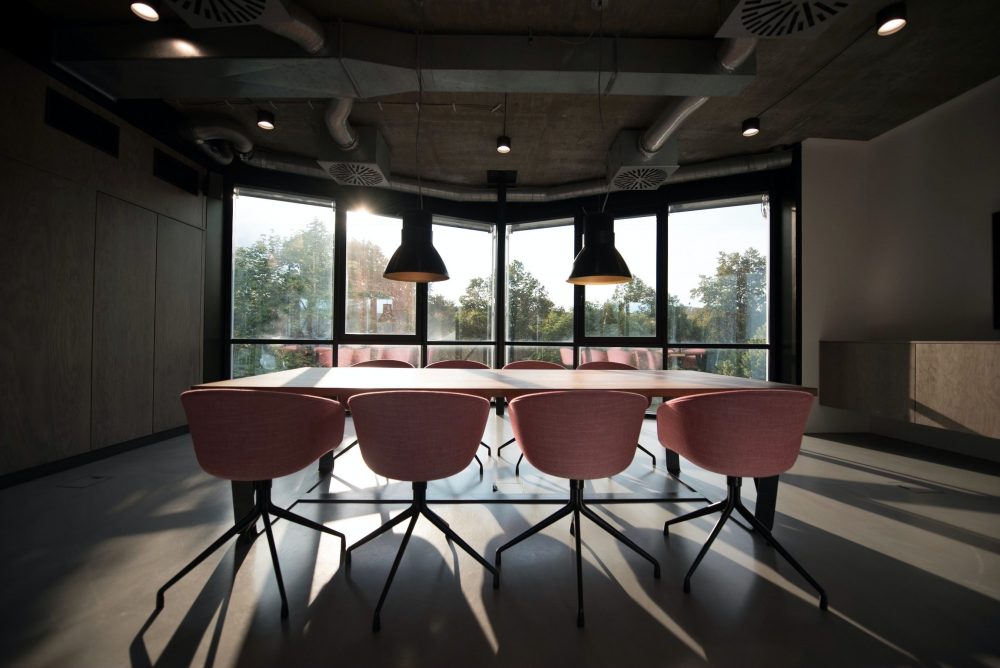Nuno Fernandes of Tétris Design and Build shares why designing a lower-density workplace model with purpose at the center will yield the greatest results for businesses post-COVID-19.

Returning to the office in 2021 is looking increasingly likely, as the COVID-19 vaccination program continues. Yet, for many, the pandemic has shown that work is not somewhere you go, but something you do. This leaves employers with big decisions around their office space – are they fit for the future vision set by a workforce now accustomed to more freedom, but in need of more inspiration.
The remote working patterns forced by COVID-19 have accelerated demand for flexible work patterns and spaces that serve a hybrid workforce and new business performance needs.
Recent research has revealed that over half of employees globally (53 percent) expect to continue working from home at least one to two days per week over the next two years. With the majority showing a preference for hybrid working, working from multiple locations will most likely become the dominant pattern as we go towards 2025.
Hybrid working patterns are driven by the simple fact that people really miss the office, above all the human interaction it offers. Seven in ten employees said that the office environment is more conducive to team-building and creative collaboration than anywhere else. Nearly three quarters (74 percent) want to come into an office.
Designing a Hybrid Model
If the purpose of an office is to truly and meaningfully change – to become a destination for collaboration and problem solving – then its design must also change. For some companies, this will mean decentralizing and downsizing headquarters. Central HQs can still impress and define company culture, and they might be complemented by smaller offices in multiple locations, closer to employees’ homes.
Leveraging the benefits of multiple office types means HQs can combine a strong focus on company community, with collaboration spaces such as amphitheatres, relaxation zones and event and breakout areas. In a time of economic uncertainty, a dispersed office model suits businesses by allowing downsizing in expensive city centers and smaller spaces to be leased in regional peripheries.
Within the Office
Within the office, design is influenced by a greater focus on health, safety, and wellbeing. Ensuring spaces are adapted to fit in with greater need for distanced workstations, fewer desks and more collaborative meeting spaces, and offices that evoke inspiration and innovation.
There will be a rise in multifunctional work areas that make efficient use of floor plans to ensure more flexibility on where and how staff can work. For instance, breaking up an open-plan workspace into smaller clusters throughout the office supports collaboration but maintains constructive social distances. In meeting rooms, having smaller tables and fewer chairs encourages smaller groups and standing meetings can make them take less time.
Successful hybrid offices also encourage a more efficient flow of employees. Along with wider corridors, one-way signage, in high-traffic areas such as reception areas, lockers and toilets, helps to dilute routes within the office. Meanwhile, effective design encourages distancing by giving subtle, visually pleasing cues as to where to sit, or to move.
Integrating biophilic design into the workspace is also important – including green walls, as well as visual and sound stimuli. Good office design can create the necessary physical separation and simultaneously promote wellbeing.
Seizing the Opportunity
Companies of all kinds are seizing a once-in-a-lifetime opportunity to change the office model on both a macro and micro level, and to lean into workforce preferences. A new purpose for the workplace is emerging and employers need to be on the front foot by evaluating what that means for their business model and its working environment. We must collectively build toward a more connected, sustainable workplace that aligns with employee expectations to ensure a smooth transition to hybrid working.
The future workplace will also be anywhere and anytime. Employees want flexibility in the way that they work, and the employee experience has become a growing priority for businesses to help people perform at their best. With the traditional office becoming the central hive of productivity, the office model is one of many instruments to drive sustained human performance, experiences and wellbeing.
Ultimately, employers must consider the purpose of the office, and why employees want to come in. Designing a lower-density workplace model with purpose at the center is not only an interesting prospect, but one that will yield the greatest results for businesses.

